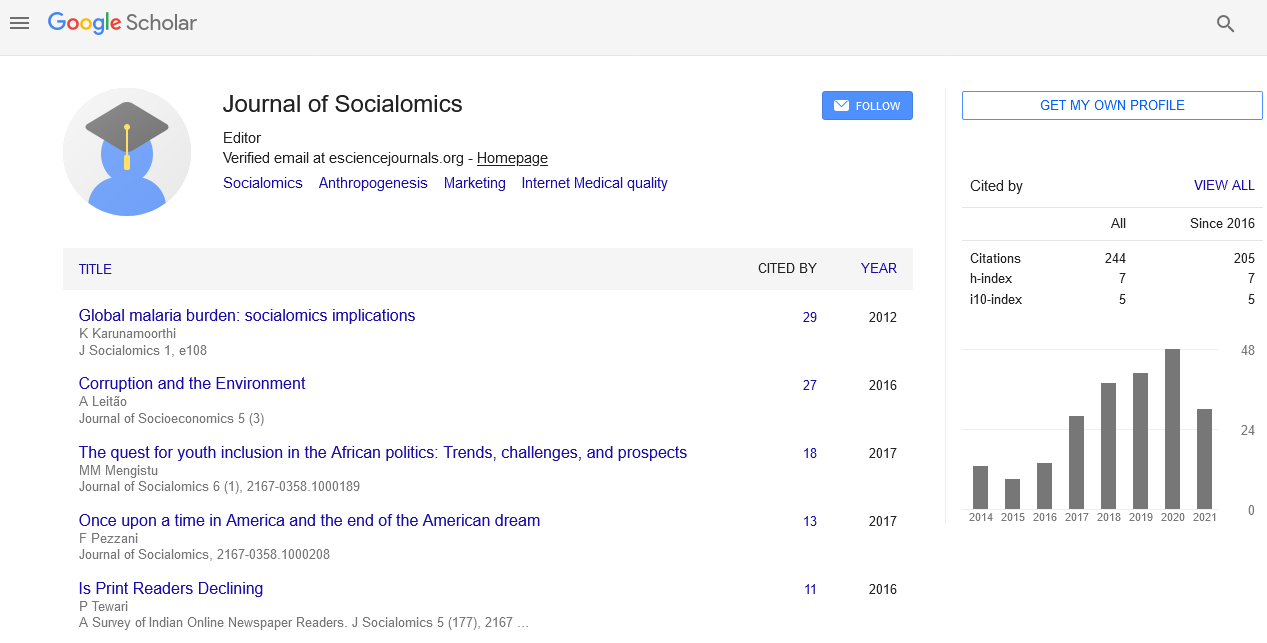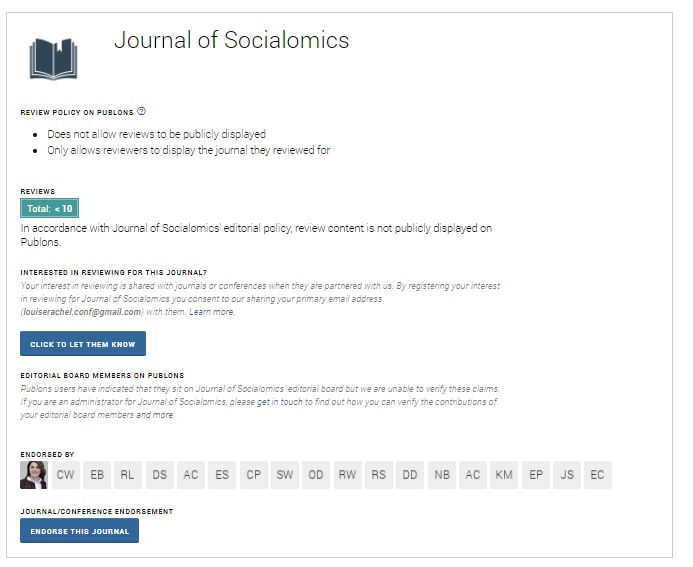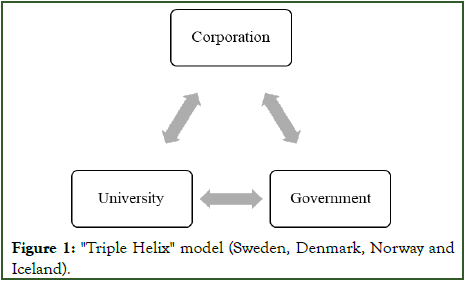Indexed In
- Open J Gate
- Genamics JournalSeek
- SafetyLit
- RefSeek
- Hamdard University
- EBSCO A-Z
- OCLC- WorldCat
- Publons
- Google Scholar
Useful Links
Share This Page
Journal Flyer

Open Access Journals
- Agri and Aquaculture
- Biochemistry
- Bioinformatics & Systems Biology
- Business & Management
- Chemistry
- Clinical Sciences
- Engineering
- Food & Nutrition
- General Science
- Genetics & Molecular Biology
- Immunology & Microbiology
- Medical Sciences
- Neuroscience & Psychology
- Nursing & Health Care
- Pharmaceutical Sciences
Mini Review - (2025) Volume 13, Issue 4
Knowledge-Based Economic Development for Environmental, Social and Governmental Risk Management in Nordic Countries
Tinatin Lomsadze*Received: 23-Nov-2023, Manuscript No. JSC-23-24026; Editor assigned: 27-Nov-2023, Pre QC No. JSC-23-24026 (PQ); Reviewed: 12-Dec-2023, QC No. JSC-23-24026; Revised: 12-Jan-2025, Manuscript No. JSC-23-24026 (R); Published: 23-Jan-2025
Abstract
The article is dedicated to social wellbeing, environment related and state institutions activity in the process of eliminating risks and to overcome roads by their theoretically and practical analysis. Article has been discussed an ideological level of various theories, opinions of well-known science and various countries experiences. In each country exists individual approach of social politics, environment protection and state institutions competencies. Some approaches are addition benefit bringer, while some is doomed for failure. At a distance of history in many country of the world, accumulated successful experience social wellbeing, environment protective and state institutions strengthening in the direction to happen risks to a minimum reduction or at all eliminate them. Noted with directions achieved good luck stand out Nordic countries. In the second part of the article, let's get to know experience of each Nordic country in terms of: Social politics, nature care and state institutions construction. Also, we will get to know each Nordic country by their achieved results to the economic growth, which has been reviewed current challenges of ESG risk eliminating technologies. Article will discuss risks that are connected with the activity of the industries which are connected to social wellbeing, environment protection and strengthening of state institutions.
Keywords
ESG risks; Social wellbeing; Environment protection; Government resilient; Triple helix; Quadruple helix; KBE development
Introduction
Competition is an integral part of human existence and development and the main driving force. Therefore, along with the change in views about the world, the views about the essence of competitiveness were changing. However, economic or other types of theories, until now, cannot give unambiguous explanations about the essence of competitiveness, since theorists interpret it differently based on their own views. The mentioned opinions of authoritative experts proved to be a sufficient basis for the development of five new criteria for assessing competitiveness in 2012, which reflect the economic, social and environmental sustainability of countries. Five criteria were distributed in four directions, namely favorable environment, human capital, markets and innovative ecosystem.
Nordic countries make their risk assessment, at first defining environmental damage possibilities. The priority is supporting such industries, which are able not to harm nature and biodiversity, but they should increase environmental capabilities and improve accommodations for everyone [1].
Article is dedicated to answer some of tasks
• How can be improved country sustainability by KBE development.
• How can be improved regional sustainability by integrating SDG tasks.
• What kind of tendencies is characteristic of KBE development Nordic Models in the ESG management?
Literature Review
In the paper we used different methods of research, focusing on, historical, logical, statistical analysis and synthesis, as well as induction and deduction methods. Sources are books, electronic literature and web resources of highly credible state institutions and international organizations [2].
The development of the criteria for association with the European Union (Copenhagen) in 1993 made important changes in the framework conventions and declarations of the United Nations. Based on the mentioned criteria, the millennium development goals were set in September 2000. The mentioned goals were to be implemented by the member states of the United Nations Organization in the period from 2000 to 2015.
Therefore, particularly intensive cooperation between international organizations and state institutions began. The United Nations development program, within the framework of the millennium development goals, supported the economic, social and environmental development of member countries in line with European standards. In the mentioned process, the United Nations Development Program was partnered with a number of influential international organizations, including the World Bank, the organization for economic cooperation and development, The European bank for reconstruction and development, etc.[3].
Discussion
Based on millennium development goals, on September 25, 2015, the UN general assembly adopted the concept of sustainable development. Since the adoption of the Paris agreement on December 12, 2015, the 17 sustainable development goals have been divided into environmental, governmental and social goals. Implementation of the goals is mandatory for the UN member states in the period from 2016 to 2030 (Table 1) [4].
| S. no | SDG 2030 | Environmental | Governmental | Social |
|---|---|---|---|---|
| 1 | No poverty | ✓ | ✓ | |
| 2 | Zero hunger | ✓ | ✓ | |
| 3 | Good health and well-being | ✓ | ✓ | ✓ |
| 4 | Quality education | ✓ | ✓ | |
| 5 | Gender equality | ✓ | ||
| 6 | Clean water and sanitation | ✓ | ||
| 7 | Affordable and clean energy | ✓ | ||
| 8 | Decent work and economic growth | ✓ | ✓ | |
| 9 | Industry, innovation and infrastructure | ✓ | ✓ | |
| 10 | Reduced inequalities | ✓ | ||
| 11 | Sustainable cities and communities | ✓ | ✓ | ✓ |
| 12 | Responsible consumption and production | ✓ | ||
| 13 | Climate action | ✓ | ||
| 14 | Life below water | ✓ | ||
| 15 | Life on land | ✓ | ||
| 16 | Peace, justice and strong institutions | ✓ | ||
| 17 | Partnerships for the goals | ✓ |
Table 1: SDG targets and the action agenda by Copenhagen criteria.
Nordic countries are the best at sustainable development and they have the best and the most effective ESG risk management model to incorporate ESG risk approaches into country sovereign and regional management. Nordic countries have unique models of ESG risk management by regional, national and global level; it is reason, that Nordic countries have the highest positions in the ESG rating for certain years. We can consider that type of the models [5].
• Teritory of Sweden is divided by eight administrative regions. Regional government and agencies, universities, industries are coordinated their activities on the regional level to enhance regional sustainability, which can enhance whole country’s sustainable competitiveness
• Teritory of Norway is divided by eleven administrative regions. Central government and agencies, universities, industries are coordinated their activities on the national and global level to enhance country global sustainability. Regional government does not participate in this process of coordination.
• Teritory of Denmark is divided by six administrative regions. Regional government and agencies, universities, industries are coordinated their activities on the regional level to enhance regional sustainability, which can enhance whole country’s sustainable competitiveness.
• Teritory of Iceland is divided by eight administrative regions. Regional government and agencies, universities, industries are coordinated their activities on the regional level to enhance regional sustainability, which can enhance whole country’s sustainable competitiveness
• Teritory of Finland is divided by five “Creative Region”. Five city government and agencies, universities, industries and communities are coordinated their activities on the municipal level to enhance city sustainability, which can enhance whole country’s sustainable competitiveness.
Nordic countries make their risk assessment, at first defining environmental damage possibilities. The priority is supporting such industries, which are able not to harm nature and biodiversity, but they should increase environmental capabilities and improve accommodations for everyone. Among such industries are: ICT, financing, micro and nano technologies, pollution free transportation, sustainable construction, sustainable textile, food technologies, bio-science, sustainable energy, maritime and aquaculture, service [6].
Developing of these industries are considering as advantages for Nordic countries competitiveness, because they are able to build Sustainable future. Industrial development can solve social risks too. Industrial development brings so much social benefits, among them are Employment and work places, improving of working conditions, strengthen local self-government and communities, Affordable insurance and healthcare, keeping of social stability and secure, increased incomes and no poverty.
Overcoming of social risks is the most important challenge for central and regional government. Their duty in this case is, managing industrial development process such as it should be able to avoid corruption and bribery, overspending, waste of administrative resources, unfair, unnecessary restrictions and etc. for these objective reasons, government need to arrange: Tax and payment strategies, Low and justice, executive remuneration, donations and political lobby, board diversity and structure.
Universities and R and D institutions can help Industries and government to improve their activities and become more effective and resource efficient. Universities and R and D institutions, Industries and government cooperation develops Knowledge Based Economy (KBE) and by this way, enhances sustainable competitiveness.
In the last two decades, concepts have appeared that have influenced and even defined entire science and technology policies in Western countries high technology, national system of innovation, information economy, knowledge based economy and the new economy. In Nordic model of Knowledge Based Economy (KBE) corporate development strategy, is built in "Triple Helix" model and "Quadruple Helix" model (Figures 1 and 2) [7].
Figure 1:"Triple Helix" model (Sweden, Denmark, Norway and Iceland).
Figure 2: "Quadruple Helix" model (Finland).
Sweden, Denmark and Iceland have the same cooperation strategy of regional government, corporations and universities. Norway has not cooperation strategy on the regional level, Norway has only national and global cooperation strategy of government, industries and universities. Also, Finland has different cooperation strategy of regional government, industries and universities and local communities, all four units are facilitating this process [8, 9].
Conclusion
Sustainable improvement of natural resources and conditions is one of the backbones of the economy, both now and in the future. In the last few years, the importance of natural resources for the Nordic region has been emphasized in the European Union. At the same time, the unique nature of the region attracts tourists from all over the world.
Nevertheless, our interest is the growth of added value through entrepreneurial activity or service development, which is a common indicator and a general basis for creating sustainable operating methods. This provision is highlighted in the "Smart Specialization" strategies of the regions of Nordic countries. Regions have invested in the development of a multifaceted economic structure, while at the same time looking for a smart specialization model tailored to them to strengthen regional competitiveness. In the process of implementing the strategy, cross-competencies were identified, which form the basis for common strategic development priorities. The regions have specialized scientific research methods, technology and business activities related to these areas. In addition, they create the best environment for cooperation between each other, based on existing high level experience in terms of industrial development.
• Clean technologies and low-carbon transmission are crosscutting issues in business. The industries assessed by the regions are built on the management and maintenance of development and the sustainable use of natural resources and conditions. The regions have become centers of scientific research and environmental business, offering tailored competence and technological solutions for environmental challenges, energy issues and sustainable use of natural resources.
• The circular industrial economy builds strong, complementary competences. The use of industrial side streams has created a new, rapidly growing business sector. The systematic development of effective solutions and practices has turned several regions into nationally and internationally recognized scientific research areas. In order to train stronger and more competent specialists, these regions need sustainable development promotion measures. Sustainable and resource efficient use of natural resources is very important. The development of water treatment methods contributes to the expansion of the circular economy chain. The formation of circular economy is considered around the development of economic opportunities of large industrial companies and business operators related to their activities.
• Digitization, innovative technologies and production processes are the main factors for increasing the competitiveness of industries. All industries must undertake a renewal process. Digitization and new technologies will play an important role in ESG management. Industries that use digital mechanisms grow and internationalize and pace faster than others.
References
- Lazarova D. Insurance companies bracing for heavy insurance claims. Radio Prague International, USA, 2008.
- Delgado M, Porter ME, Stern S. Clusters and Entrepreneuership. Washington, 2010.
[Crossref]
- Marshall A. Principles of Economic Science. London, 1890.
- Porter ME. Clusters and the New Economics of Competition. USA, 1998.
- Porter ME, Delgado M, Stern S. Cluster, Convergnce, and Economic Performance. USA, 2012.
- Sachs J, Lafortune G, Kroll C, Fuller G, Woelm F. Sustainable Development Report. England, 2022.
- Solvel O. Cluster Ballancing and Evolutionary Forces. Stockholm: IVORY publishers. Stockholm, 2008.
- Solvel O, Lindquist G, Ketels K. Cluster Initiative Green Book. Stockholm: IVORY publishers. Sweden, 2003
- Robstad O. House prices, credit and the effect of monetarypolicy in Norway: Evidence from Structural VAR Models. Norway, 2014.
Citation: Lomsadze T (2025) Knowledge-Based Economic Development for Environmental, Social and Governmental Risk Management in Nordic Countries. J Socialomics. 14:257.
Copyright: �© 2025 Lomsadze T. This is an open-access article distributed under the terms of the Creative Commons Attribution License, which permits unrestricted use, distribution, and reproduction in any medium, provided the original author and source are credited.




